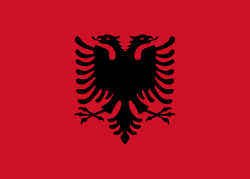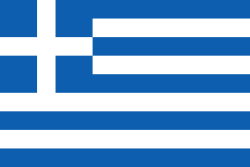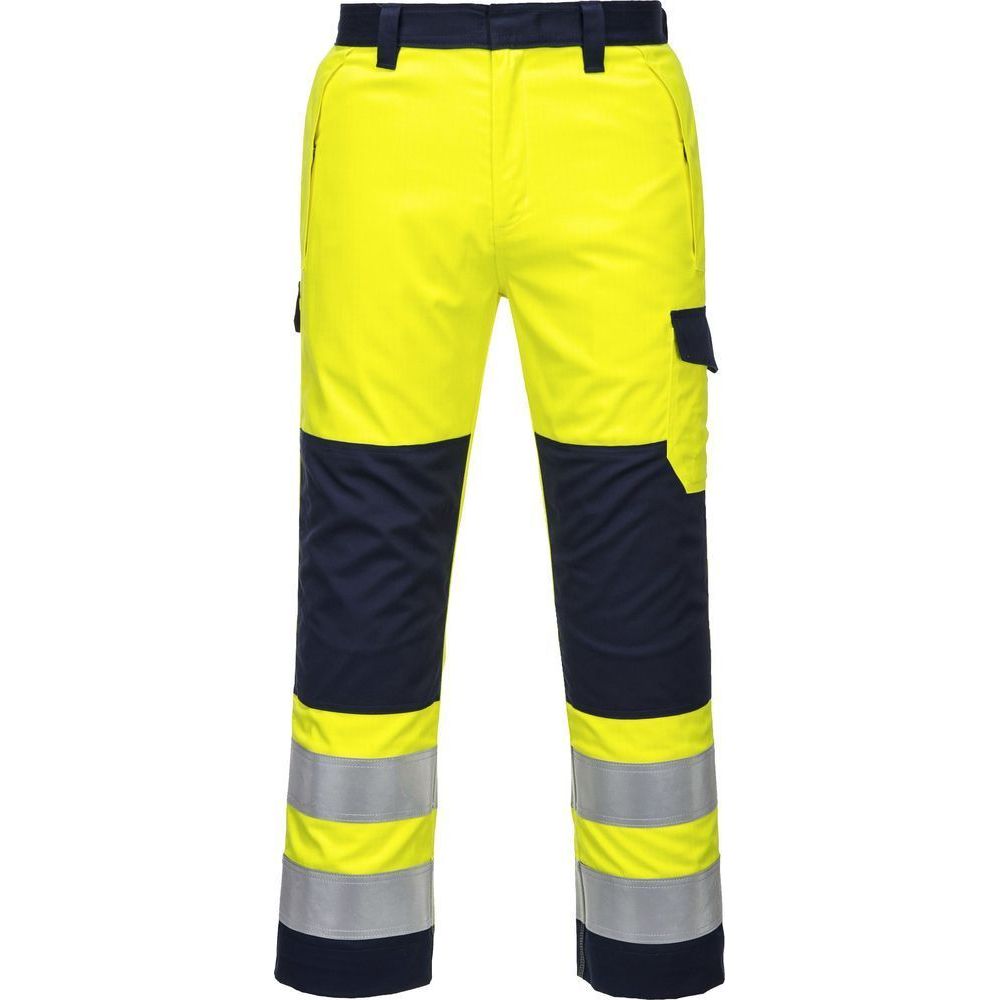MV46 Modaflame панталони со висока видливост
Соодветно на повеќе EN стандарди, овие панталони нудат идеална заштита од изложување на индустриски опасности. Еластичниот заден дел овозможува слобода на движење и гарантира удобност на облеката. Извонредните карактеристики вклучуваат двокомпонентни џебови за колена, прилагодлива должина на ногавиците за дополнителна удобност и тројно зашиени рабови за дополнителна издржливост.
Карактеристики
Инхерентно пламен отпорни квалитети нема да се намали
заштита од зрачење, конвективни и контакт на топлина
Повеќе џебови
Прилагодлив раб за прилагодување на сите должини на ногавиците
Патенти од месинг
Тројно зашиени рабови за екстра трајност
Еластичен колан за убаво прилегање
9 џебови за голем багаж
Шиење на огноотпорна лента која може да се пере индустриски
Две нивоа на џебови за штитници за колено овозможувајќи две опции за позиционирање
Овој симбол означува дека ткаенинате има UPF рејтинг 40+ и блокира 98% од UV зраците кои паѓаат врз облеката
Сертифицирано од европската комисија
CE-CAT III
Сокриен џеб за мобилен телефон
Материјали:
Ткаенина на внатрешноста: Modaflame: 60% Modacrylic, 39% памук, 1% јаглеродно влакно, 280g
Стандарди
EN ISO 11612 (A1+A2, B2,C1,F1)
EN ISO 11611 Класа 1 (A1+A2)
EN 1149-5
IEC 61482-2 IEC 61482-1-1 (Elim 6.4 CAL/CM²)
IEC 61482-2 IEC 61482-1-2 APC 1
EN 13034 ТИП PB [6]
EN ISO 20471 Класа 2
ASTM F1959/F1959M-12 (ATPV=8.4CAL/CM²(HAF=75.8%))

PORTWEST
For over 117 years we’ve possessed an unrelenting ambition to produce the world’s most trusted and requested protective wear. Through the decades, we have continuously proven our dedication to quality, producing world beating safety garments, foot protection, hand protection and PPE, while pushing the boundaries in protection technologies. Technologies that make the workplace a safer place.
EN ISO 20471 Hi-Vis Class 2
EN ISO 20471 is divided into three classes, the requirement for the area consisting of reflectors and fluorescent materials – that determines which class you need to choose. Minimum areas of visible material in m². Class 3: Reflective Tape = 0.20m², Fluorescent material = 0.80m². Class 2: Reflective Tape = 0.13m², Fluorescent material = 0.50m². Class 1: Reflective Tape = 0.10m², Fluorescent material = 0.14m². The highest class is class 3. There are two ways to attain class 3. Either choose an EN ISO 20471 product that is rated class 3 on its own (e.g. a jacket) or choose two products that together are class 3 certified.Details
EN ISO 11612 Heat & Flame
This test uses standard methods and conditions to predict the performance of fabric/garments in the event of contact with heat or flames. Specific testing is listed below: Dimensional change, Limited flame spread (A1+A2), Convective heat (B) - 3 levels, Radiant heat (C) - 4 levels, Molten aluminium splash (D) – 3 levels, Molten iron splash (E) – 3 levels, Contact heat (F) – 3 levels (temperature 250 degrees Celsius)Details
EN ISO 11611 Welding & Allied
Standard specifies two classes with specific performance requirements. Class 1: is protection against less hazardous welding techniques and situations causing lower levels of spatter and radiant heat. Class 2: is protection against more hazardous welding techniques and situations causing higher levels of spatter and radiant heat.Details
IEC 61482-2 Protective Clothing Thermal Arc Hazards
Standard for protective clothing against the thermal effects of an electric arc event. Two different test methods: Open Arc IEC 61482-1-1 and Box test EN 61482-1-2. OPEN ARC - IEC 61842-1-1 (USA). The first result, ELIM - The maximum incident energy (cal/cm²) the garment can withstand before the wearer would have a 0% probability of a second degree burn. The second result is either: ATPV (Arc Thermal Performance Value, cal/cm²) The maximum incident energy the garment can withstand before the wearer would have 50% probability of a second degree burn or EBT (Energy Break Open Threshold, cal/cm²) The incident energy at which a 50% probability of a breakopen occurs resulting in a second degree burn. Since ELIM indicates an energy value at 0% probability of a second degree burn and ATPV/EBT at 50% probability, the ELIM value is usually lower than ATPV/EBT. Large differences between the ELIM and ATPV/EBT results highlight the importance of wearing several layers of garments to ensure you are properly protected. EN 61482-1-2 (Europe) is evaluated in two classes in the same test: APC1 protects against electric arc of 4kA (arc energy 168 kJ), APC2 protects against electric arc of 7kA (arc energy 320 kJ). Unlike the American standard, there is not a result scale in this garment tests, only two levels where the garment either passes or fails. A garment with one layer of Flame Retardant fabric usually passes APC 1 - even thin shirt fabrics. To pass APC 2, a system with two or three fabric layers or a lined garment is normally required. This makes it more difficult to adapt the protection to the risk, without compromising on comfort. As APC 1 is a relatively low level of protection, we always recommend a basic protection of at least 8 cal/cm².Details
EN 1149 Anti-Static (ATEX)
This standard specifies PPE Clothing used in explosive environments (i.e. ATEX) where there is a risk that the garments could create sparks (source of ignition), which in turn could ignite explosive materials. Anti-Static garments marked EN 1149-5 are intended to be worn in Atex zones 1, 2, 20, 21 and 22. In oxygen enriched atmospheres or in zone 0, the Anti-Static garments should not be used without first being approved by a qualified Safety Engineer, as wear and tear can affect the protection of the garment and it is crucial that they are worn the correct way in these environments.Details
EN 13034 Liquid Chemicals
Standard for protection of a potential exposure to a light spray, liquid aerosols or low pressure, low volume splashes when complete liquid permeation barrier (at a molecular level) is not required. The following chemical groups/chemicals can be tested: H2SO4 30% (Sulphuric acid), NaOH 10% (Sodium hydroxide also called lye and caustic soda), O-xylene, Butanol. The result is given in scale 1-3 where the maximum value is 3. To pass the test and be able to use the EN 13034 symbol in the CE-marking, at least one chemical shall obtain level 3 for liquid repellency and at least one chemical shall obtain level 2 for resistance to penetration.Details
Inherent FR Garments
Inherent fabric guarantees lifelong protection for the wearer. The FR properties lie in the molecular structure of the fibres and cannot be washed or worn out. PROS: excellent heat and ARC protection, excellent colour fastness even after numerous washings hence good cost in use performance, typically lighter weight solutions with excellent comfort levels, typically used in less dirty environments where the corporate look is also important. CONS: limited protection against molten metal splash, typically a more expensive fabric than FR treated. The most common FR fibers used in protective clothing are modacrylics and aramidsDetails
Споделете :
| Големини - Облека | S - Small or M - Medium or L - Large or XL - XLarge or XXL - XXLarge or XXXL - 3XLARGE |
| Боја | YNR Жолта/Тегет |
Once the user has seen at least one product this snippet will be visible.





